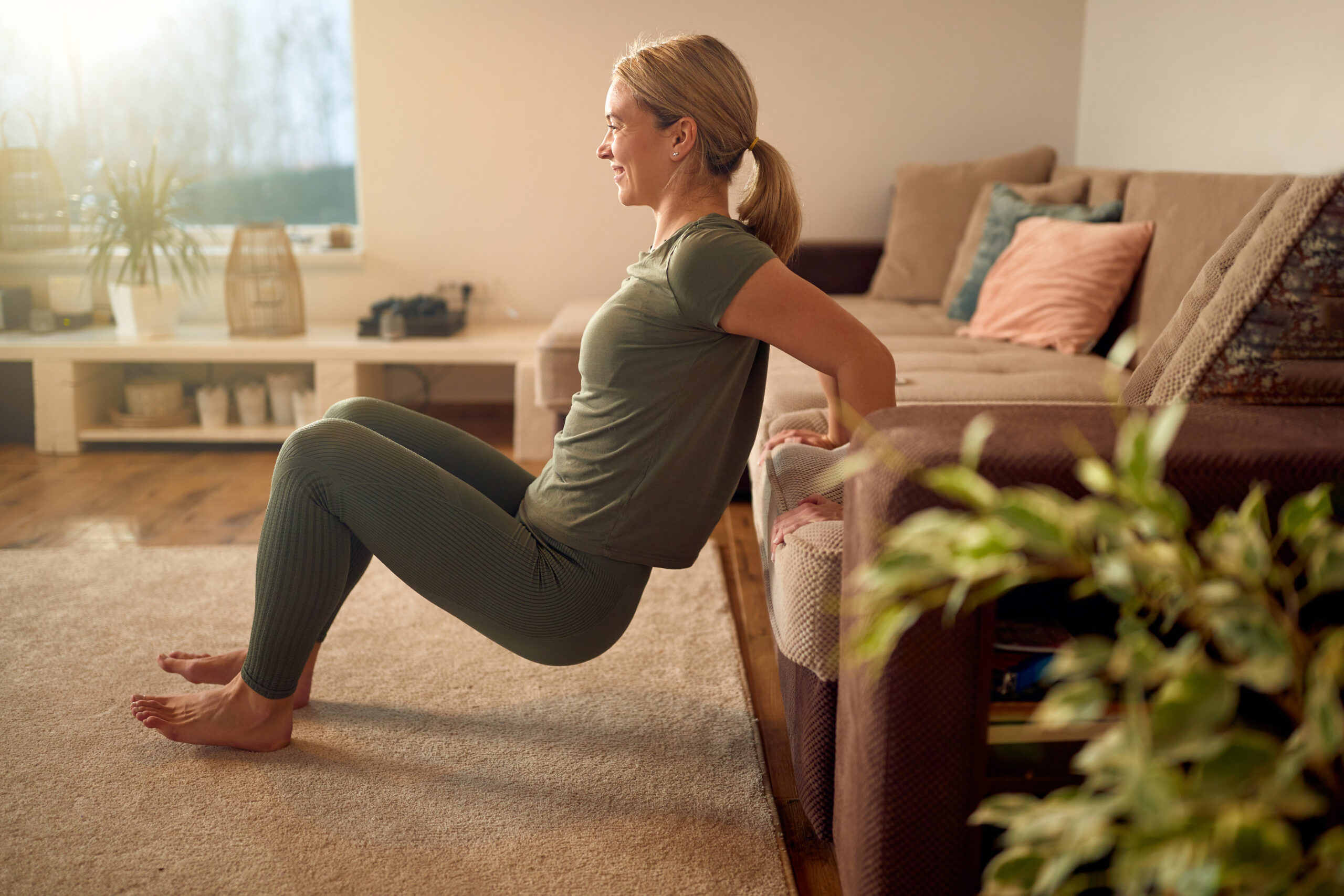
Energizing, Nurse-Friendly Exercises You Can Do at Work: Part 2
How did you make out with Part 1 of our Energizing, Nurse-Friendly Exercise series?
We spend so much time on our feet already that adding a few leg exercises to our daily routine should be easy, right?
But like any exercise routine, the most important part is committing to do it.
Our goal for giving you Nurse-Friendly Exercises is that you should be able to incorporate these movements into your work day, taking just a minute here or there several times a day.
Not only will you benefit from the exercise itself but also from the mindfulness — taking the time to think about how your body feels and then performing an exercise movement.
This month’s exercise focus is on your arms and shoulders.
Nurse-Friendly Exercise #4: Arm Circles

Arm circles serve as a great warm up exercise to loosen your shoulder joints, but you’ll feel quickly how it works those muscles as well. Sixty seconds of arm circles and you’ll feel the burn!
You can perform these from either a standing or sitting position, though we prefer a standing position so we can move a little while we do them — distracts us from the burning sensation in our shoulders!
There are two hand positions you are going to use for this movement. The first is to stand with your arms outstretched to your sides and your fingertips pointing up, like you’re directing traffic to STOP.
Make medium-sized circles with your arms, trying to keep your arms circling behind you slightly instead of in front of you. After 20 seconds, reverse direction and circle your arms backward for 20 seconds.
Now, make a slight adjustment and point your fingertips downwards. Circle your arms forward, making big circles for 20 seconds. Then reverse direction and make big circles backward for a final 20 seconds. Work to keep your arms slightly behind your body.
Increase from 20 to 30 to 40 seconds for each direction as the movement becomes more comfortable for you. You want to feel the burn.
Nurse-Friendly Exercise #5: Push Ups (Wall Ups)

Push ups are, arguably, the best exercise you can do. Period. They work your chest, back, shoulders, triceps, and core.
But they are very challenging.
If you are not already used to doing them, there are a couple of modifications that will make them easier for you.
A classic push up is performed with your hands on the ground a little wider than your shoulders, with your body in a plank position, on your toes. Lower yourself to the ground by bending your arms to a 90-degree angle and then push yourself back up. Keep your back rigid as you perform this movement, engaging your core and butt muscles.
Modification #1: Instead of being on your toes, go down to your knees instead. This requires less core strength to hold your body rigid and decreases the weight you have to maintain with your arms.
Modification #2: Instead of down on the ground, perform the push up against a table or desk. Play with the angle, starting out with a small angle but gradually increasing it until you feel the resistance when you push up.
Modification #3: Instead of using a desk, perform your push up against a wall. Stand with your hands shoulder length apart against the wall. Kick your feet out away from the wall until your body makes a comfortable angle to the wall. Bend your arms to a 90-degree angle and then straighten them. You should feel resistance as you perform this movement, otherwise, you need to move your feet further away from the wall until you do.
Nurse-Friendly Exercise #6: Triceps Chair Dips

While the biceps are the “glamour muscles,” we all know that the triceps are actually the largest muscles in the arm. And if we want to reach for a drink while wearing a tank top or a sleeveless dress without that telltale arm waddle, then we need to do more chair dips to tone our triceps.
Like all the exercises in this series, you are using only the weight of your own body to work your muscles. And you can perform them easily at work in just a few minutes.
Chair Dips are performed using a stable chair or bench — no wheels or wobbly legs, please!
Sit on the edge of the chair with your legs straight in front of you. Place your hands on the edge of the chair and lift your butt off the chair. Lower your body so your back scrapes the front of the chair and your arms reach a 90-degree angle. Then push yourself back up until your arms are once again straight. Repeat 10 times if you can without resting your butt on the seat.
Just like with Push Ups, you can modify the amount of weight and resistance you place on your triceps. Your legs outstretched in front of you creates the heaviest weight and greatest resistance.
If this is too much, you can bend your knees and bring your feet closer to the chair. The more you bend your knees, the less weight you will bear.
Play with leg position so you can do 10 chair dips in succession, feel the burn, but not hurt yourself.
NursePower Empowers Nurses!
Nursing is a physically exhausting job. We all know this. And while we are quick to tell our patients that they need to exercise and take care of their bodies, we rarely heed our own advice.
Let’s face it, the average nursing shift is hectic. We are constantly moving, constantly lifting things, constantly busy. But we all know that we can carve out a few minutes here or there to exercise a total of 15 minutes per shift.
NursePower Empowers Nurses is about helping you take better care of yourself by giving you Nurse-Friendly Exercises and other helpful practices that keep you healthy and make your life a little bit easier, a little bit better.
